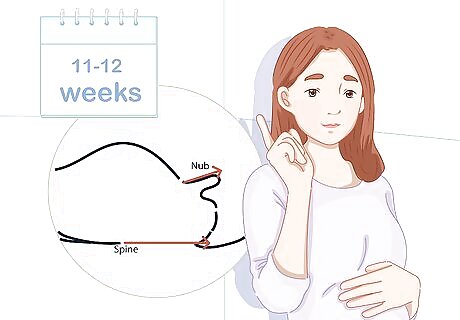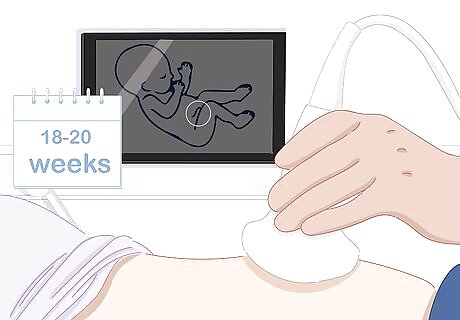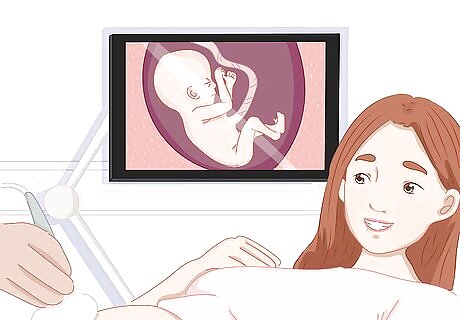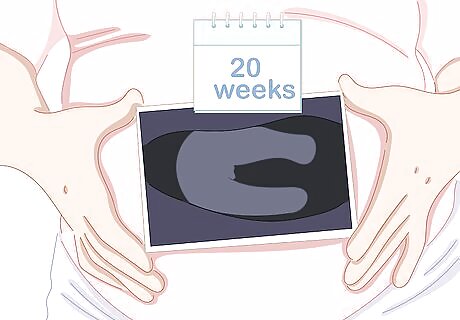
views
Asking the Technician or Doctor to Explain the Results

Ask the technician to show you what they are looking at. If you say you want to know the gender, the technician will be happy to tell you! However, you’ll need to make it clear that you don’t want to just know the results, you want to understand them. You can say something like, “Can you show me exactly what indicates the gender? Can you explain to me how you can tell? I really appreciate it!”

Inquire if the technician can use “nub theory” at around 11-12 weeks. The gender tubercle is a body of tissue that indicates the formation of the genitals. This is commonly referred to as a “nub.” If the nub is angled upward, the gender is likely male. If the nub points straight out or down, it is more likely female. Sometimes the nub won’t be visible, and the technician won’t be able to see it. That doesn’t mean that anything is wrong. You'll just need to wait until your next ultrasound and hope that it will be visible then. You probably won’t be able to identify the nub with an untrained eye. Ask the technician to point directly to the nub, and show you the angle.

Note the presence or absence of a penis at 18-20 weeks. Once you reach the 18-20 week ultrasound, it should be a lot easier to predict gender. The easiest way is to look for a penis. If you see one, there’s an excellent chance the gender is male. The absence of a penis indicates female. You might be able to identify a penis on your own, but it’s still a good idea to ask the technician if you’re looking at the right thing. Keep in mind that sometimes another body part, like a finger, might be mistaken for a penis. The position of the fetus can sometimes make it difficult to tell for sure what is what. Heidi Murkoff Heidi Murkoff, Pregnancy and Parenting Expert Ultrasounds open up a window into the womb for expecting parents. The main goal is checking the fetus's health, but they can also reveal the baby's sex. Gender is most clear on ultrasounds after 18 weeks when genitalia are more formed. However, the technology isn't foolproof — there's always potential for a delivery day surprise! Ultrasounds provide an exciting glimpse of the developing baby, though the view isn't always perfect.

Ask about advanced visualization to identify gender. Advances in technology have greatly improved how accurately ultrasounds can show gender. If your technician uses 2D imaging, they might be able to visualize additional parts of genitalia. Ask the technician to point out the vulva, clitoris, and labia, if they think the gender is female. Try to identify the scrotum and testicle of a male, with the help of the technician. 3D and 4D ultrasounds provide a much clearer picture of the baby at 18-20 weeks. However, they are completely optional, as they do not actually make it easier to determine the gender. Although ultrasounds are safe, you should only have them when necessary. Many people get 3D or 4D ultrasounds as a "keep sake", but many doctors advise that it's better to wait to snap photos after the birth. Also, insurance might not cover the expense.
Managing Your Expectations

Ask about the gender at 11-12 weeks, knowing that it might not be possible to tell. You can ask if it is possible to use the nub theory at the end of the first trimester. However, the ultrasound might not show the nub. You should also know that gender predictions at this point are much less accurate than they will be later in the pregnancy. Ultrasounds early in the pregnancy are generally to monitor the health of the baby and check for any issues. They’re not intended to be able to reveal the gender.

Expect to learn the gender at a 20-week ultrasound. The second or third trimester ultrasound can more accurately predict gender. When you go for your 18-20 week ultrasound, let the technician know that you would like to know the gender. Remember to ask them to show you exactly what they are looking at.

Accept that you have to wait for the birth to be 100% sure about the gender. Ultrasounds at 18-20 weeks might be anywhere from 88-98% accurate. That’s pretty good (it's about 10% less earlier in the pregnancy), but there is still a margin of error. It might be tough, but you’ll have to wait for the actual birth to know for certain. The position of the fetus or just a simple error on the part of the technician can result in predicting the wrong gender.


















Comments
0 comment